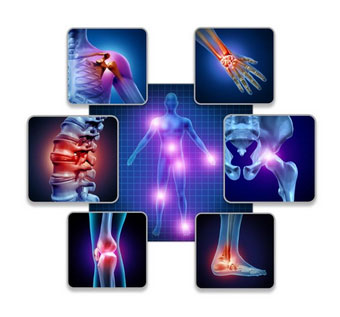Fibromyalgia is diffuse tenderness and neuropathic pain throughout the body. It occurs more often in women than men. Fibromyalgia can mimic other rheumatic diseases that cause inflammation in the joints, tendons, ligaments, bones, and muscles. No one patient presents with the same symptoms. Patients may experience generalized chronic pain, fatigue, insomnia, mood swings, confusion, stiffness, poor balance, impaired physical functions, sexual dysfunction, and memory problems. Often, patients will have other comorbidities associated with their pain such as musculoskeletal pain, lower back pain, irritable bowel syndrome (IBS), pelvic pain, and/or cystitis. All these symptoms can cause a decline in activities of daily living.

Fibromyalgia is a real condition and can be treated by a physician, general practitioner, pain management specialist, or a rheumatology specialist. In the past, the American College of Rheumatology (ACR) criteria were used to diagnose fibromyalgia. The assessment required that more than eleven out of eighteen tender points to be documented as well as chronic widespread pain. Unfortunately, not everyone uses the ACR criteria because not all patients being treated for fibromyalgia satisfy the criteria or healthcare providers may fail to recognize other symptoms associated with fibromyalgia. Today, healthcare providers diagnose fibromyalgia based on the patient’s symptoms. There is no specific test to determine if a patient has fibromyalgia. However, lab tests and X-rays can be ordered to rule out differential diagnoses.
Opioids are not effective medications for treating fibromyalgia. The best treatment plan for fibromyalgia includes educating the patient and family members about the disease, antidepressants (ex: Amitriptyline), neuropathic pain medication (ex: Gabapentin or Lyrica), muscle relaxers (ex: Robaxin), exercise (ex: yoga or high/low impact cardio), cognitive behavioral therapy, and relaxation teaching. I believe that this is the best treatment plan for patients living with fibromyalgia because many experience bouts of depression related to the constant pain. Not all patients present in the clinical setting the same way and are sometimes dismissed as psychiatric patients because of the various symptoms and behaviors. When this happens, patients may stop seeking help, have an increase in depression, have suicidal thoughts, have a decline in activities of daily living, experience poor relationships, and begin to self-medicate by using alcohol and illegal drugs. I believe that patients need to be heard and not judged when they are seeking help. If healthcare providers take the time to listen to their patients, then patients are more likely to trust their healthcare provider and adhere to the treatment plan. The result will be more positive outcomes.
References
American College of Rheumatology. (2019). Fibromyalgia. Retrieved from https://www.rheumatology.org/I-Am-A/Patient-Caregiver/Diseases-Conditions/Fibromyalgia
Lightspring. (2019). Human body joint pain concept as skeleton and muscle anatomy of the body with a group of sore joints as a painful injury and medical symptoms with 3D illustration elements.
